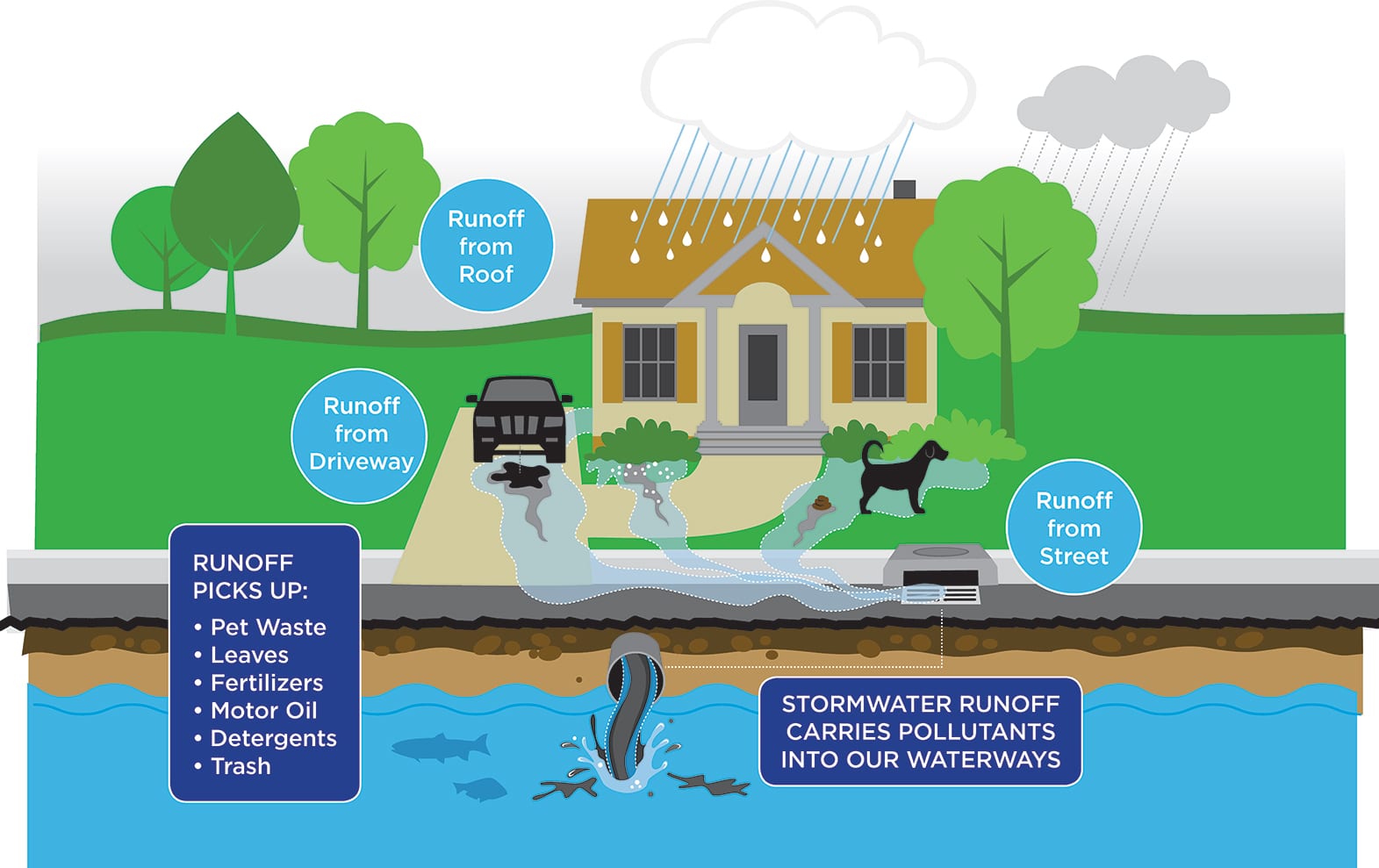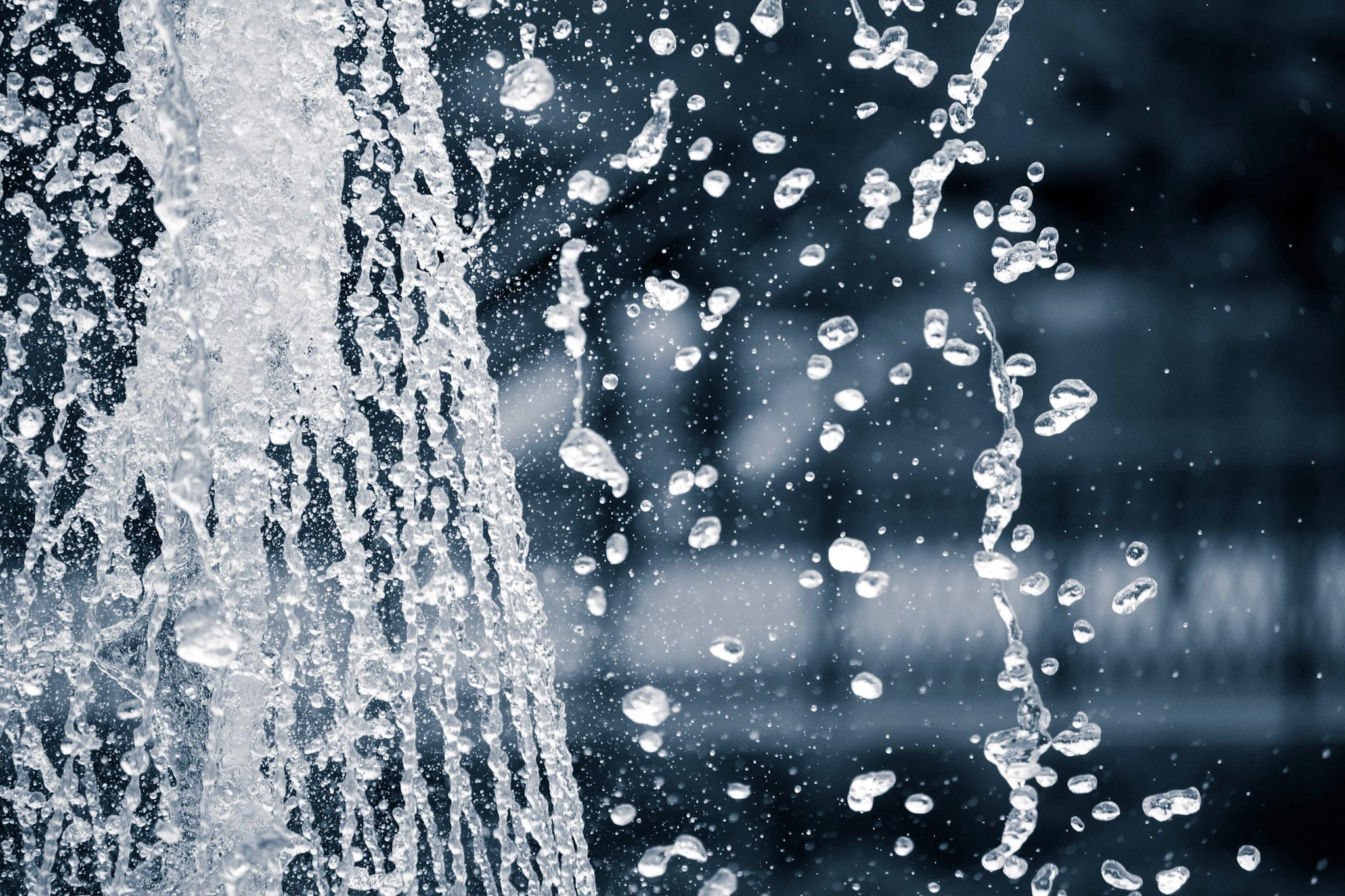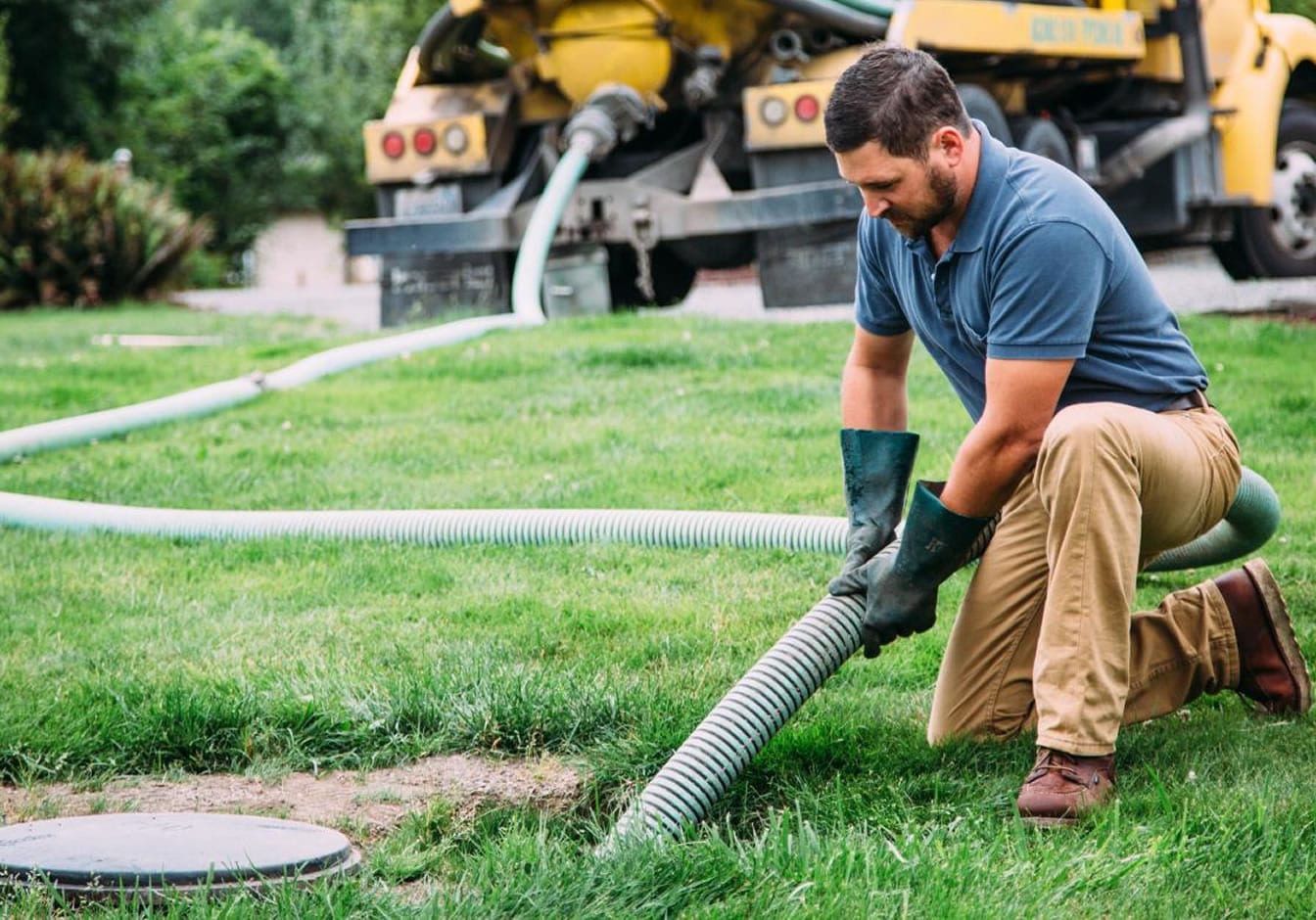Three Key Strategies
Walkways, roofs, lawns, and driveways around our homes often shed rainfall into the roadway and down street drains. These flows that run off can pick up contaminants from surfaces along the the way — trash, pet waste, fertilizers, detergents, salt, and motor oil — and move through drains out to pollute nearby streams, rivers, lakes, ponds, and wetlands.
Here are three key strategies to reduce polluted flows. Note that by reducing use of lawn care products and better protecting drinking water, these strategies also serve to reduce health risks to you and your family.


SOAK UP THE RAIN
Redirect rainfall so that it soaks up close to where it falls. This can be achieved through rain gardens, porous paving, or through use of rain barrels or cisterns to capture and reuse storm water.
For additional information on soaking up rainfall, see the following:
EPA Soak up the Rain

FERTILIZE LAWNS LESS
Get a soil test before you apply any fertilizer to your lawn or garden. The results will let you know what your lawn and garden actually need in terms of nutrients. For soil nutrient testing, click on "Get a Soil Test" at the UMass Testing Lab. It is simple and inexpensive.
For additional information, click here.

CARE FOR YOUR SEPTIC SYSTEM
Keep your septic system in good working order with regular inspections and maintenance. If you use a garbage disposal in your home, pumping should occur every year. Otherwise, pumping ought to occur every 3 years typically. If you have a nearby well, good practice with your septic system will also reduce risk of contaminating your drinking water supply.
Click here for useful graphic that shows how your septic system works and includes some useful tips.
